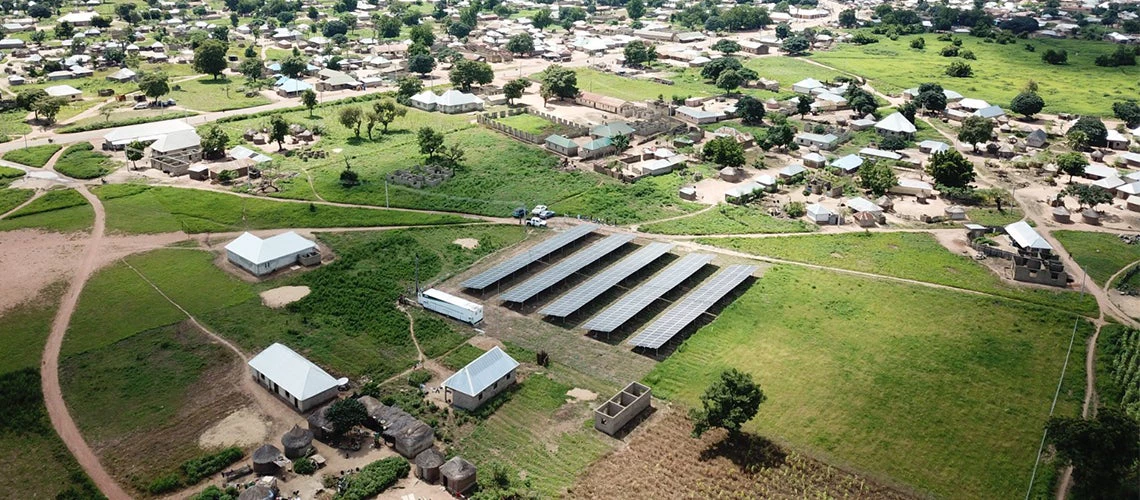 Lighting Up Africa: Nigeria Can Show the Way
Lighting Up Africa: Nigeria Can Show the Way
Over the past 20 years, considerable progress has been made in electrifying the world, with the number of people without electricity at home being chopped in half — the most transformative and immediate way of transforming lives. Yet Africa is the exception — when it shouldn’t be.
Today, over 600 million people are without access to reliable electricity on the African continent where electrification efforts haven’t kept pace with population growth.
But blaming demographic pressures for the slow progress is way too easy. It’s time for collective responsibility and collective action. An unplugged continent is our last great obstacle to realizing our promise of a world with electricity for all.
In Nigeria alone, over 85 million people —more than 4 out of 10 Nigerians— are deprived of electricity. My trip to Abuja earlier this month reinforced what I already knew: the paradox of energy poverty in a land of plenty. Nigeria, an economic powerhouse with huge solar potential, has the largest electricity access deficit in the world. A shocking reality for a country beaming with energy.
And even those connected to the grid face frequent power outages, at a huge cost for society and the economy. Without the lifeblood of electricity, entire communities struggle to preserve crops, irrigate their fields, engage in economic activities, run health clinics, or allow children to study or play in decent and safe conditions. All of this creates a ripple effect that threatens the very foundation of healthy, prosperous, and resilient societies.
My time in Abuja also convinced me that Nigeria can show the way to electrifying Africa. Why? Because Nigeria’s transformation has already begun – with every new household connected to electricity a small victory.
At the World Bank, we have bold plans for Nigeria —and the rest of Africa.
Just recently, we have launched a groundbreaking program called DARES (Distributed Access through Renewable Energy Scale-Up), which will provide access to clean and reliable energy to 20% of the unelectrified and over 200,000 Micro, Small and Medium-sized Enterprises (MSMEs) by 2030 through private sector interventions. To create the conditions for even greater victories, we are working closely with the Nigerian authorities on grid reforms and sector performance improvements.
Governments, starting with Nigeria, need to take the lead in jump-starting the clean energy revolution through reforms and stable policy and regulatory frameworks, supported by concessional finance that can attract big amounts of private finance. DARES specifically prioritizes affordability, by providing highly targeted subsidies to populations that need it most; sustainability, by linking access solutions to productive uses of electricity; and scalability, by catalyzing upfront private investments and accelerating the deployment of mini grids and standalone solar solutions.
Most importantly, this project holds potential for broader development across Africa. Connecting people in Nigeria is just the tip of the iceberg. Key components of DARES, such as affordability, sustainability, scalability, and regional cooperation, are the much larger submerged parts of the energy access challenge – elements which, I’m convinced, require far-sighted strategies, adaptive cross-sectoral government programs, and replicable regional approaches to fulfill our pledge to connect at least 200 million additional people to electricity in Africa by 2030 (100 million in Eastern and Southern Africa and 100 million across West and Central Africa).
Affordability is the key that unlocks the full transformative potential of electricity for development. Electricity cannot be reserved for those who can afford it. Closing the electricity gap cannot deepen existing inequalities. Instead, it should empower people, boost economic growth, and improve health and educational outcomes. Innovative schemes like “Pay as you Go” plans for solar energy can help close the affordability gap for end-users. And targeted measures and incentives designed to increase the productive use of electricity will lead to increased demand and further investment in improving electricity quality and affordability, thus creating a virtuous cycle.
Sustainability involves a combined focus on deep sector reforms and productive use of electricity that will progressively break the cycle of reliance on public money and government subsidies. A future where energy access will not be a handout, but a self-sustaining driver of progress and prosperity.
Finally, scalability means that every penny of public finance dedicated to energy access can also serve as a launchpad and catalyst for private enterprise and investment, maximizing the leverage of limited public funds.
The integration of countries’ power systems can help grow exponentially affordable and sustainable power supply from the sunbelt in the Sahel, the water towers in Ethiopia, Guinea, and the Democratic Republic of the Congo, and the geothermal and wind farms in Kenya – a few examples I find so promising.
But regional integration is not only about building physical cross-border infrastructure. It requires countries to cooperate in building open and competitive regional power markets. It requires stronger utilities trading power on regional markets. The results can be transformative and are already apparent as power pools expand across the continent.
Closing the energy access gap is not an impossible feat. With the cost of renewable energy falling over the past 10 years, we are closer than ever. But we can’t go into it halfway. It will take bold policy reforms, groundbreaking innovations, and massive investments in clean, affordable, and reliable sources of energy. Only then can we truly envision a green future for all.
This blog was initially published on This Day Nigeria.


Join the Conversation